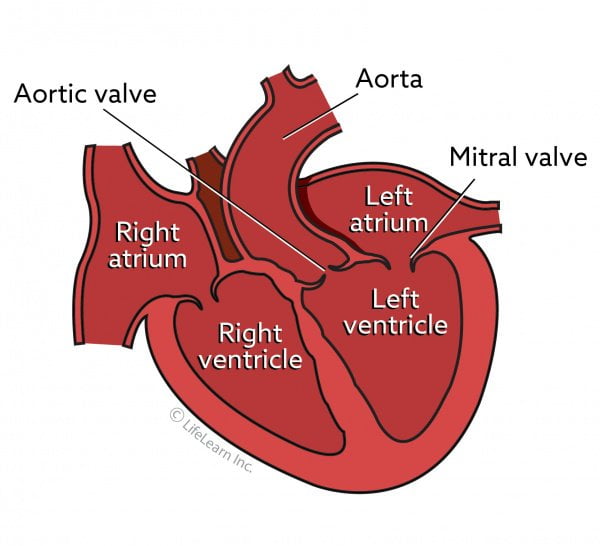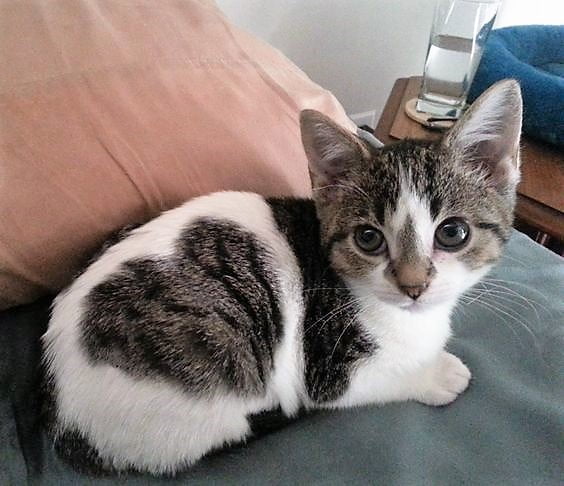I’m referring to the domestic cat by the way. There is a presumption that when you use the word “cat” you are referring to the domestic cat 😕 . The domestic cat’s heart, according to my research, is about 0.5-0.75 the size of a golf ball. A golf ball is 1.68 inches across (diameter) which is 4.268 cm in metric measurements. That makes the domestic cat’s heart approx. 1.26 inches across although the heart is not round 😉 .

For comparison purposes, the human heart is about the size of 1.5 baseballs and the medium-sized dog’s heart is about the size of a tennis ball. Although dogs vary tremendously in size and therefore it is perhaps foolish to specify the size of their heart.
Naturally the same issue applies to cats. Some domestic cats are twice the size of others. That doesn’t mean their heart is twice the size but it must be bigger.
The anatomy of a domestic cat’s heart is the same as that of the human. The heart occupies the thoracic cavity which is separated from the abdominal cavity by the diaphragm. This maintains negative pressure within the thoracic cavity. This in turn keeps the lungs fully inflated.
Arteries carry bright-red blood which is rich in oxygen from the lungs and nutrients from the digestive tract to the left atrium of the heart where it passes into the left ventricle and is pumped to the body via the aorta. Blood from the body enters the right atrium where it passes into the right ventricle and is pumped to the lungs via the pulmonary artery.

RELATED: How big is a cat’s stomach? And are we feeding our cats all wrong?
The body of a cat weighing about 12 pounds contains about 12 fluid ounces (330 mL) of blood. This is about the same amount as in a soft-drink can. Blood carried in the arteries from the heart is at its highest pressure. The pressure is at its lowest in the veins returning blood to the heart. The pulse or heartbeat of a cat is the regular expansion and contraction of the muscular, elastic walls of arteries as the heart pushes the blood through them. Fifteen to 20% of a cat’s blood is sent to the brain even though it is a small part of the overall body weight.
RELATED: How to Check My Cat’s Pulse?
Resting muscles receive about twice this but during heavy physical activity such as escape from danger up to 90% of the blood can be diverted into the muscles from the cat’s organs and even sometimes from the brain.
The cat’s nerves in conjunction with hormones controls the amount of blood that each part of the body receives through the dilation of arterioles in response to activity which allows an increased blood supply to that region of the body.
Cats have three blood types: A, B, and AB. Most domestic cats are type A but blood type varies with the geographic location of the animal. For example, all moggies in Switzerland are type A but this drops to 97% in Britain, Holland and Austria. In France 85% of moggies have typed A blood. In New England, America, almost hundred percent of non-purebred cats (moggies) have typed A blood. Purebred Exotic Shorthairs and Cornish Rex cats have 25% type B blood, for example.

